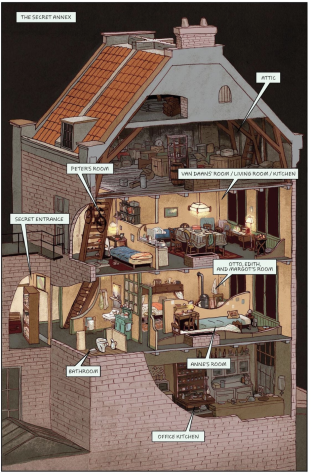Anne Frank Becomes Controversial?
Graphic paragraph spurs controversy in Anne Frank adaptation.
Keller ISD removed Anne Frank’s Diary: The Graphic Adaptation from library shelves earlier this month to debate whether or not it should be banned. A week ago, the book was reinstated, but the question remains: What was so “inappropriate” about the illustrated journal?
Most students remember reading “Anne Frank’s Diary” in Elementary or Middle School. The award-winning memoir chronicles the years that she spent in hiding from the Nazis during World War II.
After reading the graphic novel, I’ve compiled a list of possible reasons for the proposed ban.

Many portions of the story focus on Anne’s experience growing up in the Annex, a secret apartment behind her father’s workplace that her family occupied along with the Van Daans.
Anne Frank was thirteen years old when she began writing in her diary. As a young woman, she often wrote about topics related to puberty. One page features a passage that concerned parents could interpret as “vulgar” and “graphic.”
“I don’t think boys are as complicated as girls. You can easily see what boys look like in photographs or pictures of male nudes, but with women it’s different. In women, the genitals, or whatever they’re called, are hidden between their legs,” Anne writes.
She then goes into further detail about her anatomy.
The removal of Anne Frank’s Diary: The Graphic Adaptation is part of a nationwide push to censor books in student libraries. While this specific book is now back on Keller ISD shelves, other stories are being challenged frequently.
One way that you can help end the withdrawal of books from school shelves is to check out books from your school library and make your opinions about censorship known to parents, school officials, and librarians.
Anne Frank’s Diary: The Graphic Adaptation can be found and checked out in the Paschal Library.
Your donation will support the student journalists of Paschal High School - TX. Your contribution will allow us to purchase equipment and cover our annual website hosting costs.




Maya | Sep 9, 2022 at 9:08 am
Great article